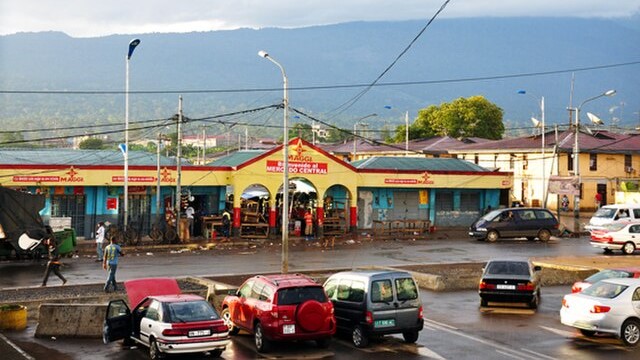On a humid morning in Malabo, the stalls of the central market begin to stir. Vendors arrange pyramids of mangoes and bananas, fishermen lay out the morning’s catch on beds of melting ice, and the air thickens with the scent of chili, coriander, and wood smoke from nearby cookfires. These markets, whether in the island capital or in small inland towns, are not merely spaces of commerce but crossroads of culture, community, and tradition.
Equatorial Guinea, a small Central African nation with both island and mainland territories, draws much of its culinary character from its geography. Tropical forests and fertile soils provide a steady supply of fruit—pineapples, papayas, bananas—while the Atlantic delivers barracuda, tuna, and crab, staples of coastal kitchens. In market after market, the abundance of produce and seafood testifies to a food culture anchored in both land and sea.
Fishmongers, their hands marked by years of work, speak of tides, seasons, and family fishing traditions. At neighboring stalls, farmers offer goat, chicken, and beef, much of it raised in rural homesteads and transported into town before dawn. These ingredients, often combined in dishes such as pepper soup or grilled fish seasoned with fiery spices, reflect both continuity and adaptation in Equatorial Guinea’s cuisine.
Spices and condiments occupy their own corner of the market, a riot of colors and aromas that signal their central role in everyday cooking. Red chilies ground into powder, bunches of coriander tied in twine, and locally made sauces are all part of the palette from which cooks draw. They provide the heat and depth that distinguish home-cooked meals, from simple stews to elaborate celebratory feasts.
Markets also serve as showcases for artisans. Handwoven baskets, pottery, and textiles often appear alongside produce and fish, blurring the line between food exchange and cultural expression. For many families, selling handicrafts alongside farm goods ensures not only additional income but also the continuation of craft traditions passed down through generations.
Beyond commerce, these spaces function as communal gathering points. Conversations between vendors and buyers, stories shared over food, and the transmission of recipes from one generation to the next make the markets vital arenas for cultural preservation. In the bustle of trade, there is also the slower rhythm of memory, where food becomes a bridge linking people to place and heritage.
In Equatorial Guinea, the marketplace is not simply where meals begin; it is where identity is reaffirmed, where livelihoods are sustained, and where the threads of tradition remain tightly woven into daily life.
Sources
- United Nations Food and Agriculture Organization (FAO), Food Security and Nutrition in Central Africa
- BBC Africa, “Tastes of Equatorial Guinea: A Culinary Exploration”
- Nkwain, J. (2021). “Markets as Cultural Hubs in Equatorial Guinea,” Journal of African Studies
- UNESCO, Intangible Cultural Heritage: Food and Community Practices in Central Africa


